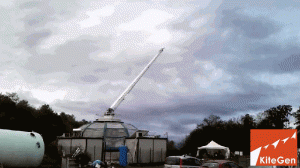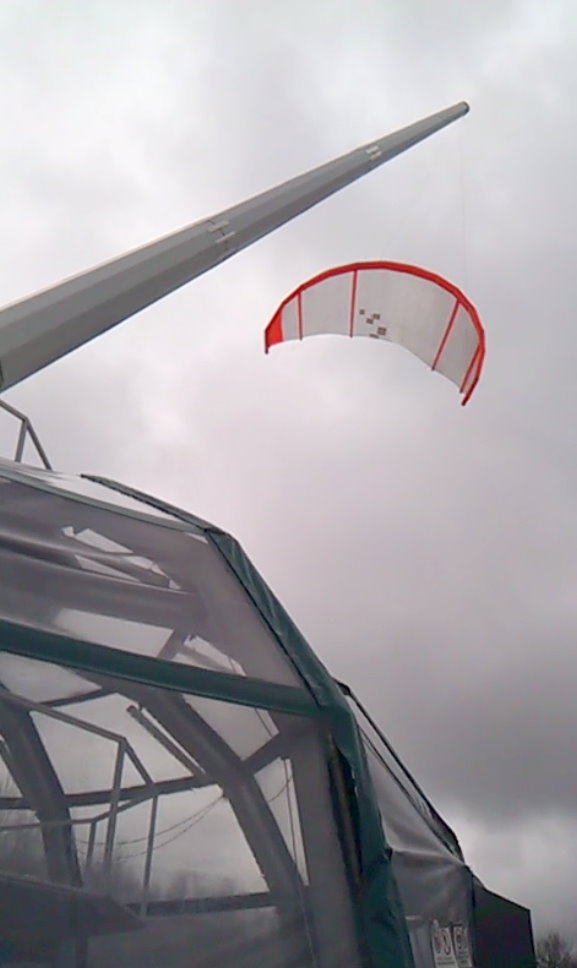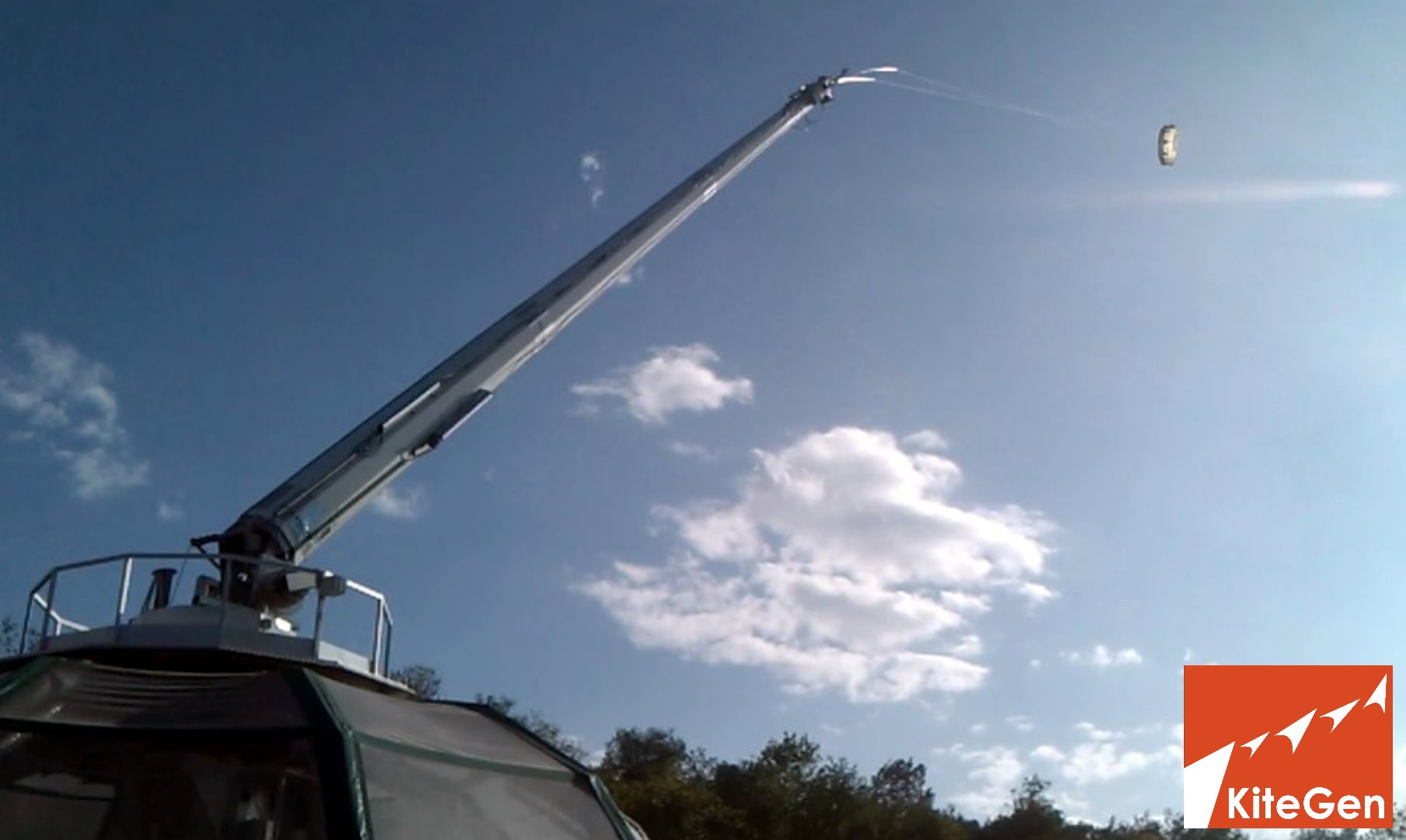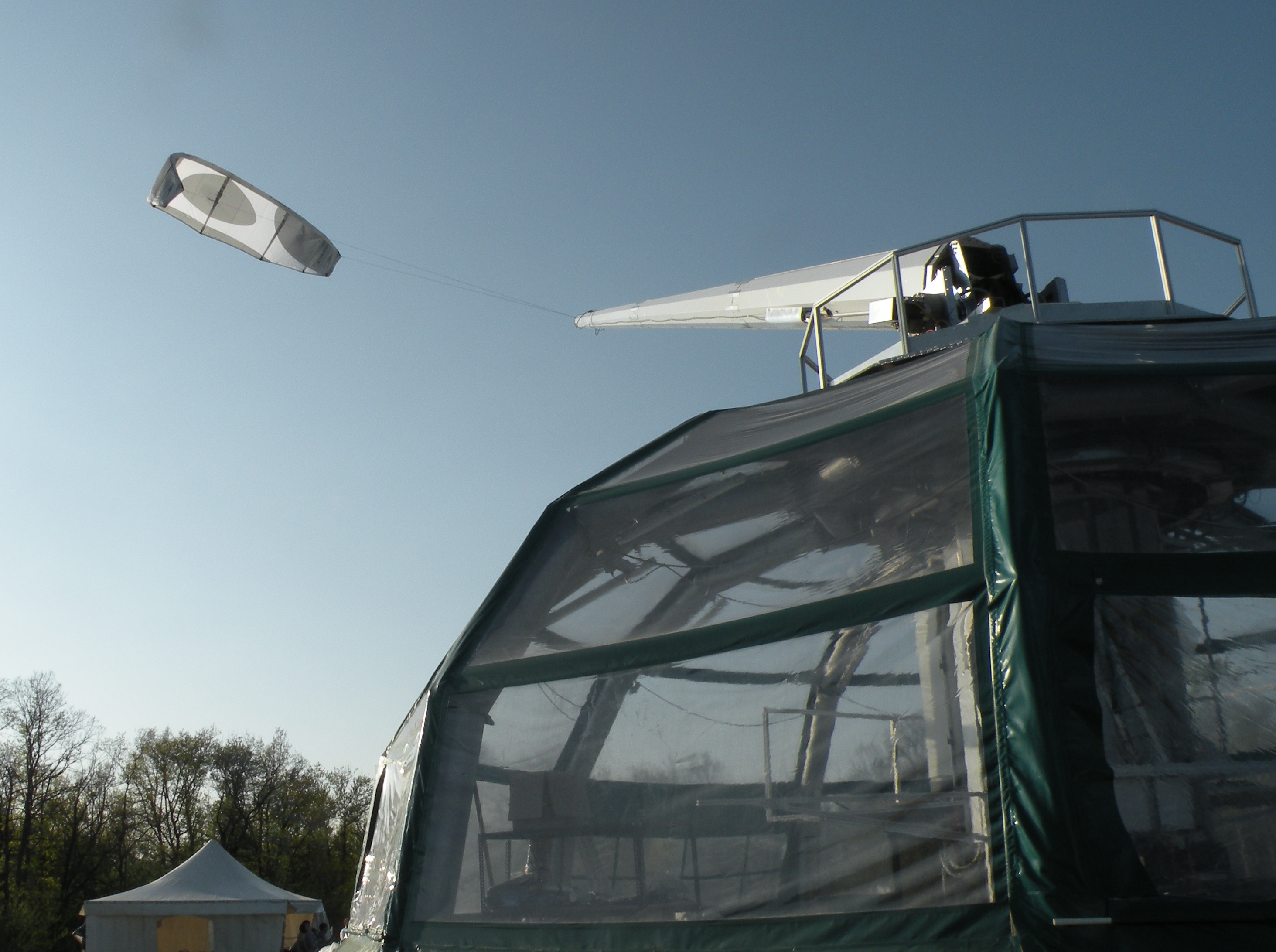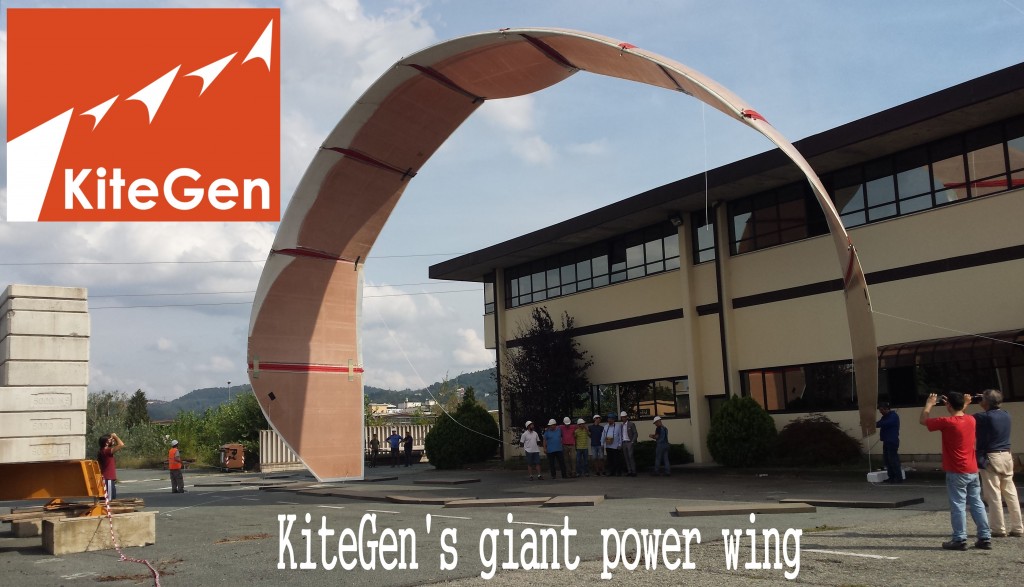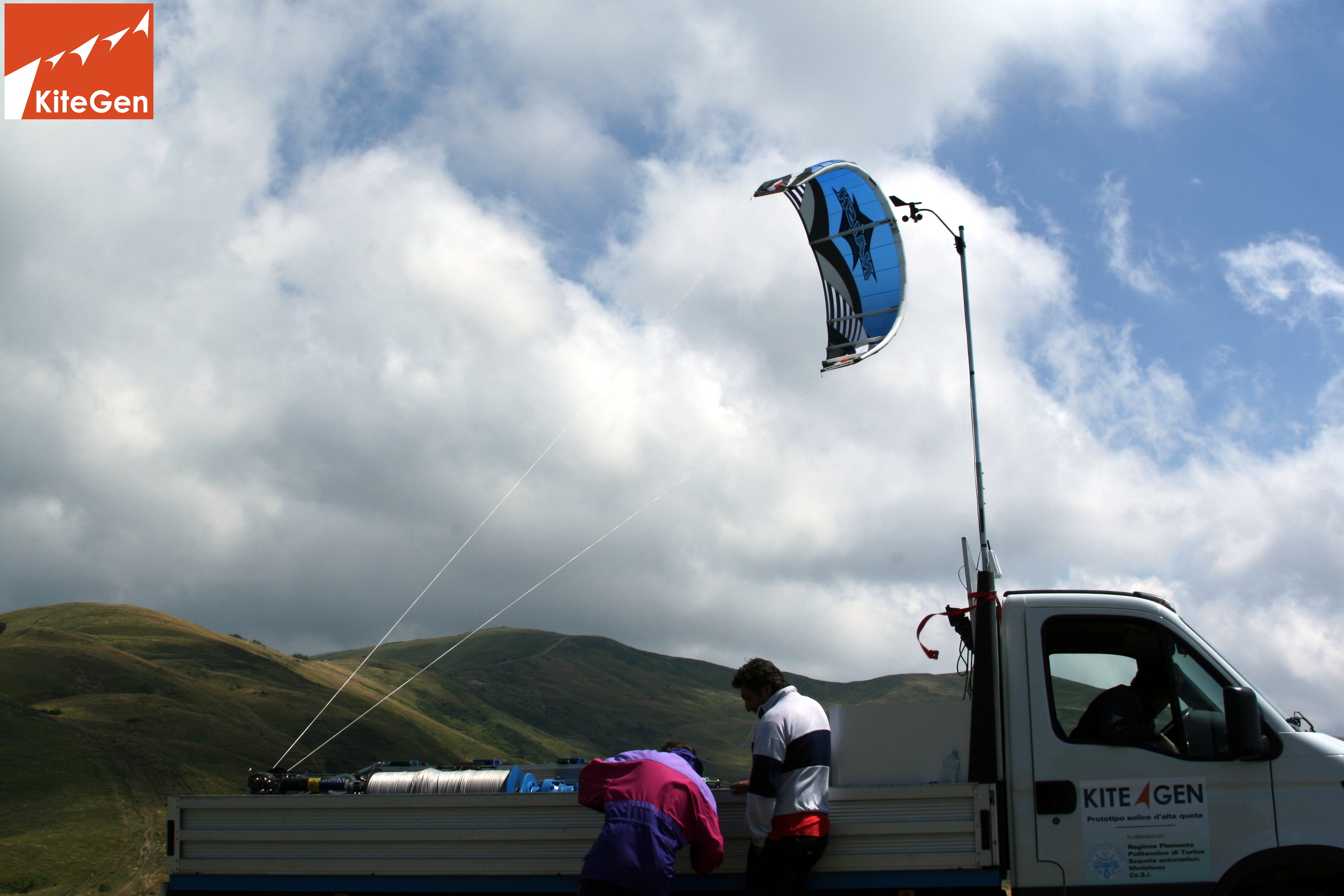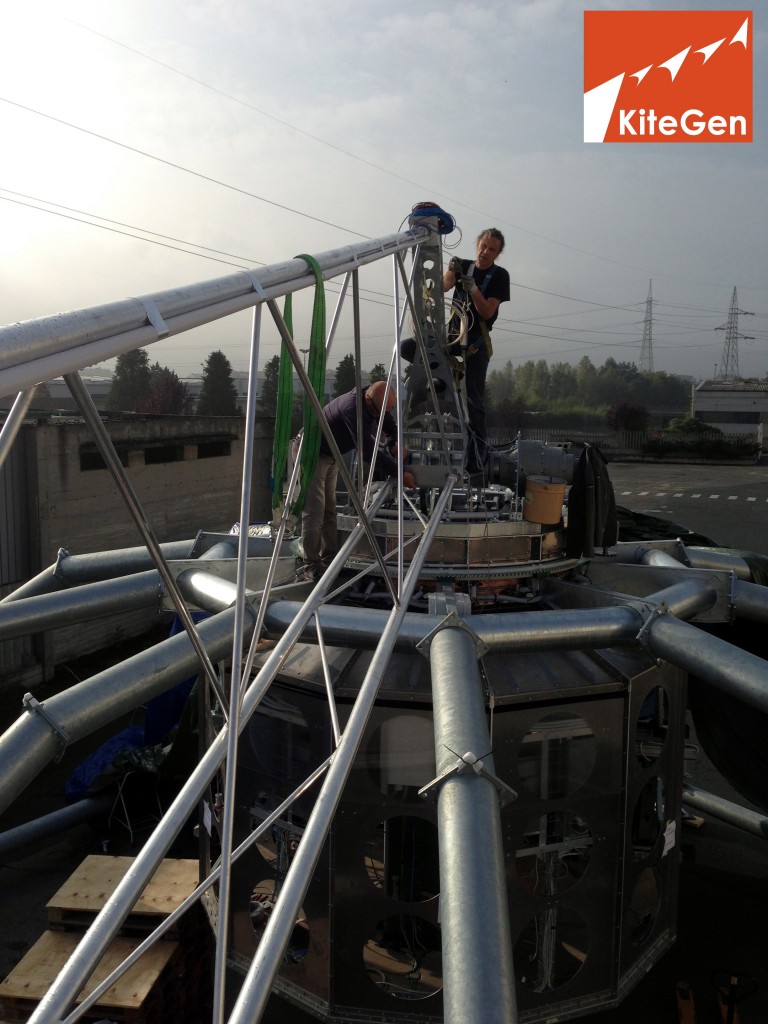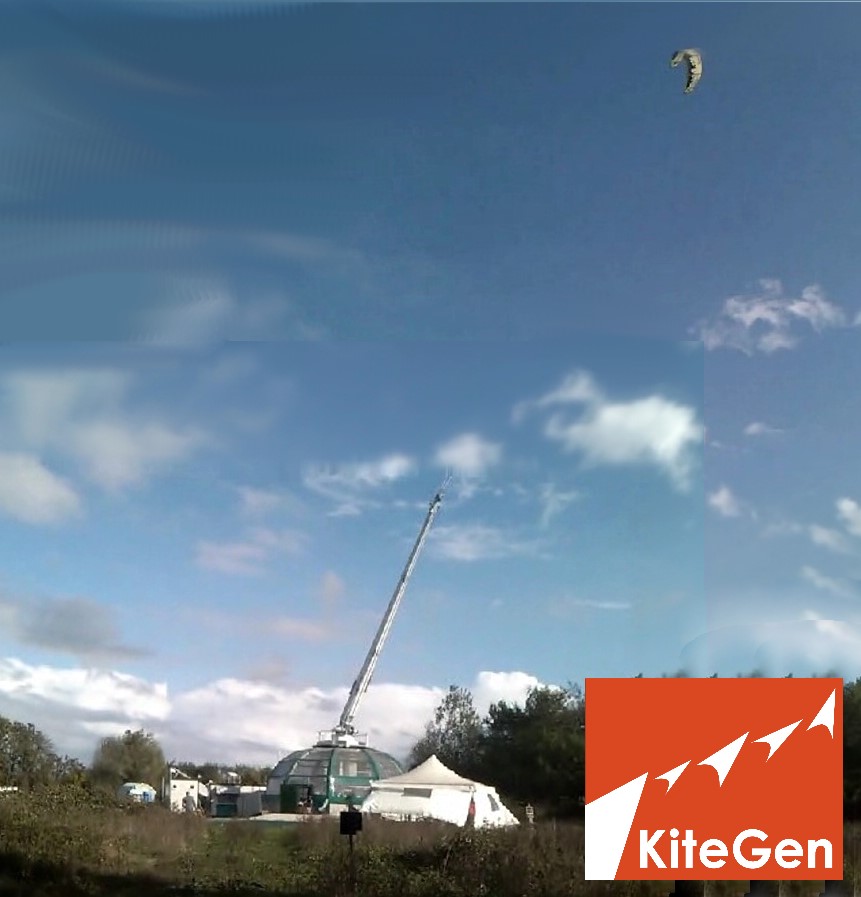KiteGen an ambitious energy technology, or an unavoidable enterprise?
Our Vision
(You are welcome to use or add to https://groups.yahoo.com/neo/groups/kitegen/info)
Why should there be an affordable energy problem? After all, there is plenty of energy around us. The sun beams on the earth’s surface a daily amount of energy that corresponds to almost ten thousand times the primary energy we currently generate – mainly – from fossil fuels. And that doesn’t include geothermal energy, nor the ocean waves, nor the perspectives of nuclear energy, especially in terms of fusion power. Just tap a small fraction of this energy bonanza that surrounds us and we can have more than we need.
But, of course, things are not so simple. We still rely heavily on fossil fuels for our needs and switching to alternative sources is proving to be an ineffective and difficult process. Production from traditional nuclear plants is struggling to grow and fusion power collects a series of technological challenges that unlikely could be solved, included the extreme rareness of suitable neutron donors materials (i.e. beryllium) needed to sustain and feed the deuterium tritium reaction. This issue relegates D-T fusion among the very finite planet resources even if the challenging technological issues are overcome.
Traditional renewable sources, such as wood burning and hydroelectric, are today the most important and effective ones, but faced to the dimension of energy they have very limited possibilities of further expansion. On the other side the “new” renewables (mainly photovoltaic and wind power) still produce only a minuscule fraction of the worlds’ total primary energy, despite heavy subsides or feed in tariff that annihilate the net energy balance. In fact, the hidden issue here is that the continuous financial support to deployment has also an energy intensity to take into account, which typically over-helms the benefit. But who wants to hear about that.
Therefore, we have a problem of cost, which can be intended as monetary costs, but also in terms of energy return of energy invested (ERoEI). As shown in Charles Hall’s reanalysis and in Weissbach paper, the ERoEI of new renewable can be considered insufficient in all cases. Similar returns are reported for current nuclear technology, fallen under the usefulness threshold mainly for safety measures extra-costs.
In other words, the energy used to manufacture, install and maintain efficient and safe those power units is more than the energy they produce in their lifespan.
Unfortunately, it’s generally assumed that it only takes a few years before i.e. solar panels will have generated as much energy as it was used for their construction, resulting in very low greenhouse gas emissions compared to conventional grid electricity. The studies upon which this assumption is based are written by a handful of researchers who arguably have a positive bias towards solar PV. A more critical analysis shows that the cumulative energy and CO2 balance of the industry chain is negative, meaning that solar PV has actually increased energy use and greenhouse gas emissions instead of lowering them.
Decades ago, the EROEI of the golden days of petroleum was of the order of 100, or perhaps even better (Hall 2009). It was this blessing high EROEI that led fossil fuels to power the brilliant past economy and to acquire the dominant position that they have today. Not having a similarly high ERoEI, other energy sources can’t have the possibility to substitute conventional sources. Today, we still need fossil energy to build non-fossil energy components and plants, to maintain and, even more importantly, to subsidize them.
As far as fossil fuels are concerned, their decline clearly started in 2005 (the peak oil), when they became unaffordable for most of the world population, losing their engine role for the growth, leading to an unprecedented demand destruction. In 2005 the total production was 130 million barrels/day oil equivalent with a extraction marginal cost of 20$/boe. Today, in 2015, only 80 million barrels are extracted with such cost, while the remaining production of 60 million barrels/day has a marginal cost of 60$, that is to say three times more and the worsening effect on economy are evident at planetary scale, without recovering hopes.
So, we are facing Tantalus’ curse: we are surrounded by abundant energy but we can’t get it. That is true unless we develop a technology with a much higher ERoEI than what we have now. With a very fast energy return on investment, we could free the world’s energy system from its dependence on fossil fuels. That is, unfortunately, easier said than done. The internet is full of claims of supposed breakthroughs in energy technologies that promise a lot but turn out to be just dreams, or even worse, outright scams without scientific background. But there exist an energy technology that can not only promise, but deliver a high EROEI that is also based on sound physical principles, and gaining attention: high altitude wind power.
One of the basic ideas of high altitude wind power is that wind is more intense as you move up in the atmosphere. The average wind speed inside the bounder layer increases with height according to an exponent (called “Hellman exponent”) which is about 1/7. But the energy contained in a mass of air in movement increases with the cube of speed. From a simple calculation, we see that if we could raise a wind turbine to a height of 1000 m, we could increase the power obtained of a factor of 8, in comparison to the same turbine near the ground. Even larger increases are possible at higher altitudes, where winds are also much more constant, thus also easing the intermittency problem of conventional wind turbines. But of course, it is impossible to reach such heights with the current wind technology, limited to about 100 m because of the dramatic increasing of cost and weight of the towers and foundations compared to the foresee power gain.
This concept has been clear for a long time and has led to several proposals to tap the wind at higher heights. There are two possible ways for doing that: flygen and groundgen. You can find a recent summary of the progress in this area in the work published by Antonello Cherubini on ScienceDirect. As you can see, there are several ideas in this field, many of which exist only as sketches on paper. In many cases, the energy yield of the proposed systems is only a guess. While for those systems based on aerostats, the need of a non renewable resource (helium) is a considerable limit, then the trigonometric ratio between the little buoyancy force provided by helium and the intense drag wind force blow down the equipment, excluding them from the altitude wind exploitation category.
Several systems have been studied in depth and part of them have been tested in practical experiments worldwide. Systems based on propellers are possible, like the huge multicopters of Sky windpower or the planes of Makani Power and systems based on kites or wings with one, two or more lines, with the fly control actuators close or inside the wing or at ground. All of them produced enough energy to definitely validate the generic concept of altitude wind exploitation.
KiteGen, early pioneering the sector, deliberately chose and developed studies and several prototypes for two main specific configuration, the first one called KG Stem and the other KG Carousel, conducting a development effort for both solutions. Tests on several prototypes systems have been completed and energy producing experimental plants built in continental Northern Italy and Sardinia island.
The KiteGen Stem is a simple aerodynamic system: it uses specially designed kites that create lift dynamically, by flying at 70-80 m/sec; this is the speed reached by the tips of the blades of a conventional wind turbine. The system uses a single kite linked to a power generator located on the ground. The kite moves like a yo-yo: when it goes up, it generates pull force that combined with the rope reel out provide the mechanical energy that is transformed into electric power by the ground generator. When it reaches its maximum height, it is placed in an aerodynamically non-lifting configuration, so that it can be pulled down at a very small energy cost. The “power” phase would last 90% of the time while the “pull back” phase would be much faster. A single stem could have a maximum power of few tents of MW.
To attain more power is straightforward to realize a wind farm of KiteGen Stem with even hundred machines in the same field with a territorial energy density of 250MW/km2, with a machinery footprint of only 1%.
Larger plants could be operated in the “KG Carousel” configuration. [simulator video] In this case, the kites fly at a constant height and at much higher altitudes, pulling in rotation a generator that moves on a wide circular rail. For a large carousel system, the maximum power obtained can be calculated as of the order of GW, exposing a law that see the power attainable as a function of the diameter raised to the fifth power, while the increment of cost is linear. This is due to a combination of parameters, including the wind front intercepted that raises with the square, the gain in altitude that implies a cube improvement and other factors like the air density and the number of kites in the array.
Astonishing EROEI
Since the KiteGen has been studied in detail, we can use it to make an estimate of the ERoEI involved in high altitude wind generation. Before getting to that, however, let’s summarize the known data for the current wind technology. LCA study for a conventional 3 blades 3MW wind turbine was reported by Nalukowe et al, (2006). They estimate the total energy input for building and maintaining the turbine as ca. 8000 MWh for 20 years of lifetime. Since the total weight of the above ground part of the turbine is about 600 tons, we can estimate an embodied energy requirement of about 13 kWh/kg. The turbine will produce in good sites about 90,000 MWh of electrical energy (1500h * 3MWn *20years) during its lifetime and hence the final EROEI is ca. 12 (90000Mwh/8000MWh).
Now, let’s see the results of a similar approach for the KiteGen. According to some LCA applied to KiteGen, the energy required to make a 3 MW rated power KiteGen Stem is of 40kWh/kg or 40 MWh/ton. The calculation that leads to this value takes into account all the requirements in terms of the materials required: steel for the structure, copper for power lines, machining, transportation, building, etc. This value includes also the energy costs involved with having workers at the plant and for the periodic substitution of cables and kites over a 30 year lifespan.
We see that the KiteGen requires more energy per kg than a conventional wind turbine; this is expected because it is a more sophisticated machine. But the KG Stem is much lighter: we are talking of about 20 tons in total for a 3MW plant. So, we can estimate the total energy requirement as 20 tons*40 MWh/ton= 800 MWh. Assuming 5000 hours per year of operation at maximum power, the plant could produce approximately 15,000 MWh per year, or 450,000 MWh in 30 years. The final result is an EROEI = 562 (!!). If we assume a 20 year lifespan for homogeneity, the estimate should be reduced, but it remains high. For larger KiteGen plants of the Carousel type it would be possible to reach higher heights, tap into stronger winds without a heavier machine and increase even more the ERoEI, typically three times.
Ultimate energy storage
This calculation should be enough to show us the enormous potential of high altitude wind power. ERoEIs higher than 100, perhaps even much higher, bring us back to the golden age of cheap and abundant fossil fuels, without all the troubles and problems that fossil fuels brought. A further advantage of high altitude wind is that plants can be placed almost anywhere; another is that we can obtain a nearly constant output for most of the time (Archer and Caldeira, 2009). Even the energy storage issue will find an ultimate solution, the cost would not be completely eliminated, but it would be negligible due to a brilliant topo-logistic solution invented by Ken Caldeira.
Autobreeding
With high altitude wind, we might really have the kind of energy “too cheap to meter” that was prophesied in the optimistic 1950s. Not only we could have cheap energy, but we could also have it fast. Consider a conventional wind turbine, with an EROEI of 12 over a 20 years lifetime. During this period, the energy generated, if fully reserved for the source growth and deployment, could be used to build 12 more turbines; an average of one per year. A KiteGen, with an EROEI > 500 and the same lifespan, could be the “seed” for hundreds more KiteGens, an average of more than one per month for each stem leading to an exponential growing pace, doubling each month the installed park in fully energetic autarchy.
Climate runaway solution
With such a high EROEI, high altitude wind energy wouldn’t need any more fossil fuels as energy subsidy. It could grow by itself so fast to be able to replace fossil sources in few years. That would also ease the climate problem not only by rapidly halting the emissions of greenhouse gases from fossil fuels, but also powering geoengineering projects to adsorb CO2 from sea or atmosphere. Also the promising CCU require huge energy to be accomplished.
Straightforward feasibility
All this cannot be considered anymore a dream. It is tested and verified with several thousand hours of energy production in the research activities since 2006. Many worldwide laboratories confirmed our findings successfully reproducing our early experiments.
It is an opportunity that has solid basis in atmosphere physics, aerodynamic and engineering sciences and thanks KiteGen also a final design of the industrial scale machines. Almost 80 brand new components compose the system each physically validated, reaching the technology readiness 8.
KiteGen is truly the long awaited “Energy Miracle“. But unfortunately miracles aren’t commonly well perceived, so the extra-cost and time to disseminate and teach the novelty, its multidisciplinary nature and the development strategy affects all relationships and all stages of the industrial initiative imposing dis-economies and delays.
After the full validation of the single wing Stem concept, the needed components and the take-off procedures, KiteGen prepared an industrial plan of 50 machines in order to realize a full featured first batch of production. Fifty machines is a well computed trade-off for industrial tools mortgage and the minimum quantity to produce them with enough quality hence operative reliability. KiteGen is trying now to setup a supply chain ready to face the production volume and train a first deployment/maintenance team. This step has to be done and supported, obviously without an existing track record of the industrial scale, because it is a brand new product, only the research activity tracks could be available and not only from KiteGen.
We take the occasion here to send a message to investment banks and Innovation funds and institutions that occasionally inquiry us, then criticizing our approach: Asking KiteGen to change development strategy and planning it is a pointless discussion, Our development plan is the only possible and in any case the cheapest. How it cost? much less than the “off the shelf” equivalent wind turbines. How it take? About the same time to install a conventional wind farm.
The energy transition based on KiteGen, how will take?
Depends of environment friendliness, KiteGen submitted successful proposals based on calls of public innovation funds and obtained grants of about 78 millions euros, unfortunately such support was never made available due Italian debt crisis, this had the effect to push back our technology readiness, loosing key competence and organization, years of wasted work.
Recently we had the opportunity progress again reaching the TR8 thanks private support and a little European project. Starting from the current level, without loosing more time and insane cash restriction it is likely required less than two year to ignite the auto-breeding KiteGen production and deployment process. Then the KiteGen Stem is a light machine, little materials to process, easy logistic both for production and installation, a sustained production and a strong organization could double the deployed park each month. Less than an aggressive scenario could provide the transition from fossil fuels in less than a decade, without changing our society habits thanks the electro-synthesis of fuels. World requires two millions Stem machines to solve the electrical supply and about six millions to substitute fossil fuels with the green variant. To compare a similar industrial effort, the heavy truck production is about 3 millions vehicle/year.
The ultimate limits of high altitude wind power.
We should still remember that the earth is a limited system. It is estimated that about 2% of the Sun’s energy reaching the earth’s surface is transformed into wind energy. The atmosphere is not very efficient as a thermal engine, but there is so much energy from the sun that even a mere 2% is a huge amount in comparison to our needs. The total stationary energy stored in form of winds is estimated as of the order of 100,000 terawatt-hours, and 3600TW (Gustavson) is the power flow received by the sun, in the same time dispersed in heat near the ground under the bounding layer. In comparison, the total primary energy burnt by humans corresponds to an average of just about 16 TW, corresponding of 6 TW (56,000 Terawatt-hour /year) of energetic services. if we consider the Carnot efficiency of conversion. KiteGen, instead, isn’t affected by such energy loss because the noble nature of mechanical/electrical power.
So, there is no doubt that wind energy is abundant, and the exploitation harness it just a little before the natural degradation in heat: according to a 2005 study by Archer and Jacobson, at 80 meters of height there is already enough energy in the atmosphere that it could be exploited by a massive deployment of the conventional wind technologies to provide a total amount corresponding to the present production.
But there is much more energy at higher altitudes and we need to exploit just a few percent of it to be able to produce enough for our current needs, dramatically improving the density and easing the harnessing.
One problem could be the effect of high altitude kite on the atmospheric wind circulation. This question has been examined by Archer and Caldeira (2009) by means of climate models. The results are that tapping high altitude winds would reduce precipitation. Also, it would have a cooling effect and could affect climate. The problem would be minimal (around 0.1% reduction in precipitation) for amounts of energy tapped corresponding to our present demand. But this effect does pose a limit to the technology. It may not be advisable to use high altitude wind power for generating more than a maximum of around ten times the present production. It is still a huge amount of energy available for free and generating a very small impact on the earth’s ecosystems. It could even be further increased, indirectly, by using wind energy to drive the extremely expensive process to refine the reliable and efficient silicon to the high end of solar grade level for photovoltaic panels. In the end, we shouldn’t be surprised of these perspectives. After all, as we said, we are surrounded by huge amounts of energy and if we find a way to exploit it, well, why not?
From these data, we could be tempted to see high altitude wind power as a nearly limitless energy technology. But that would be a mistake. Energy production is not static – it goes with the economy and if the economy is powered by a source of cheap and abundant energy it tends to grow exponentially.
KiteGen could help to rescue us from the incumbent missing support of fossil fuels for the coming centuries, but more responsibility is required by the humankind to avoid to reach again its limit, because likely no other magic and sustainable solutions are conceivable.
So, even with abundant energy, we still need to come to terms with the fact that the earth is a limited system. However, high altitude wind power offers us a hope of a future of relative abundance, even of prosperity, if we’ll be able to keep the economy and the population stable and avoid over-exploiting our agricultural and mineral resources, but this is outside our mission.
References
Archer, C. L., and Jacobson, M.Z., 2005, “Evaluation of global wind power”
Archer, C. L. and Caldeira, K, 2009, “Global assessment of high altitude wind power”
Big Gav, 2008, “Alternative Wind Power Experiments – SkySails and Airborne Wind Turbines”
Hall, C and Lambert, J. G., 2009 (accessed) “The balloon diagram and your future”
Hurley, B. 2009, “How much wind energy is there?” “How much wind energy is there?”
Meadows, D. Randers, J, and Meadows D., 2004 “The Limits to Growth, the 30 years update”, # ISBN 1-931498-58-X,
Nalukowe, B. B., Liu J., Damien, W., Lukawski, T., 2006, “Life Cycle Assessment of a Wind Turbine”
REN21, 2009, , “Renewables: global status report”
WNA (World Nuclear Association) 2009, “World Nuclear News 2009.”
https://www.euro-fusion.org/eurofusion/the-road-to-fusion-electricity/
